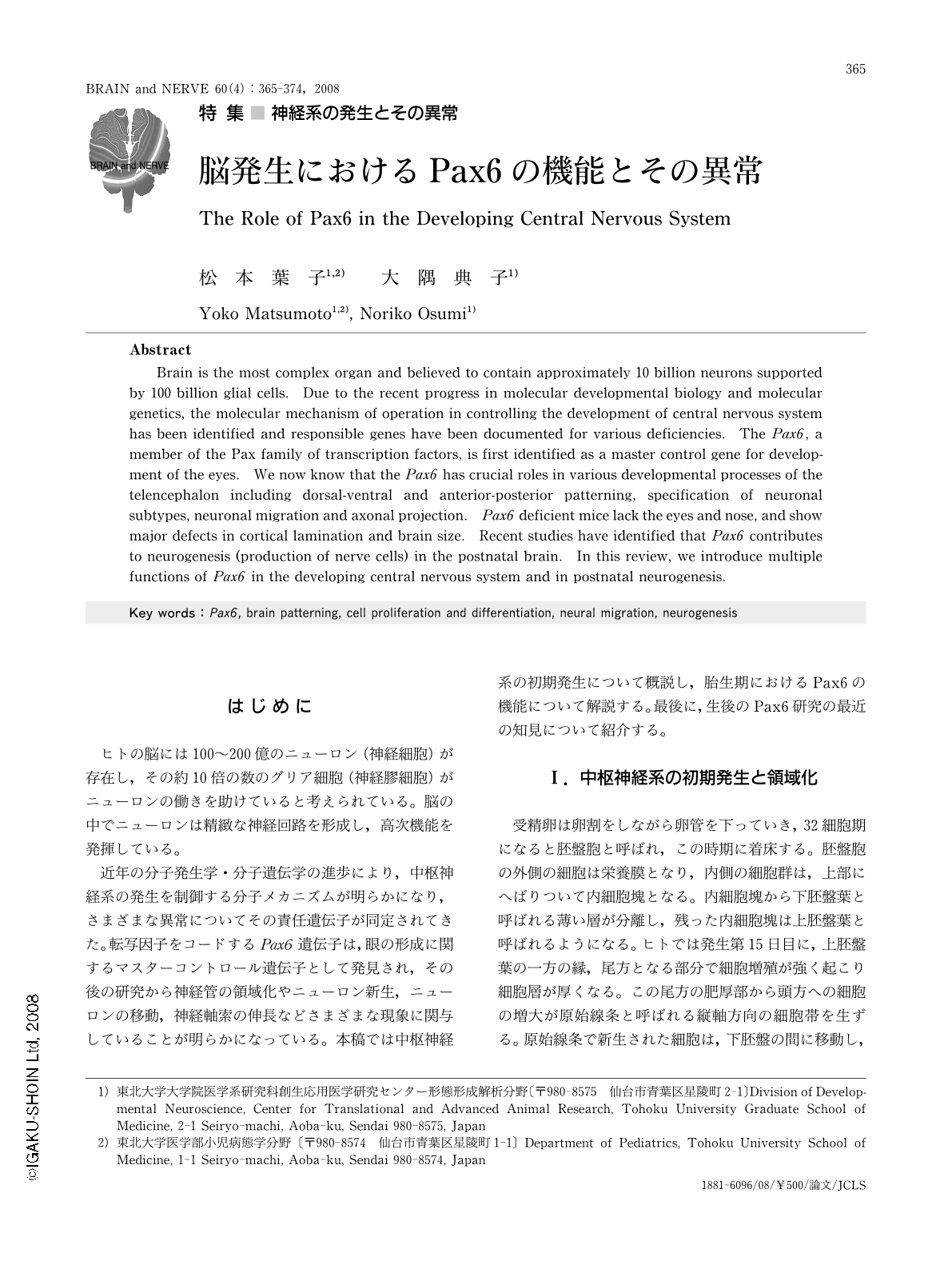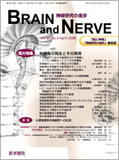Japanese
English
- 有料閲覧
- Abstract 文献概要
- 1ページ目 Look Inside
- 参考文献 Reference
はじめに
ヒトの脳には100~200億のニューロン(神経細胞)が存在し,その約10倍の数のグリア細胞(神経膠細胞)がニューロンの働きを助けていると考えられている。脳の中でニューロンは精緻な神経回路を形成し,高次機能を発揮している。
近年の分子発生学・分子遺伝学の進歩により,中枢神経系の発生を制御する分子メカニズムが明らかになり,さまざまな異常についてその責任遺伝子が同定されてきた。転写因子をコードするPax6遺伝子は,眼の形成に関するマスターコントロール遺伝子として発見され,その後の研究から神経管の領域化やニューロン新生,ニューロンの移動,神経軸索の伸長などさまざまな現象に関与していることが明らかになっている。本稿では中枢神経系の初期発生について概説し,胎生期におけるPax6の機能について解説する。最後に,生後のPax6研究の最近の知見について紹介する。
Abstract
Brain is the most complex organ and believed to contain approximately 10 billion neurons supported by 100 billion glial cells. Due to the recent progress in molecular developmental biology and molecular genetics, the molecular mechanism of operation in controlling the development of central nervous system has been identified and responsible genes have been documented for various deficiencies. The Pax6, a member of the Pax family of transcription factors, is first identified as a master control gene for development of the eyes. We now know that the Pax6 has crucial roles in various developmental processes of the telencephalon including dorsal-ventral and anterior-posterior patterning, specification of neuronal subtypes, neuronal migration and axonal projection. Pax6 deficient mice lack the eyes and nose, and show major defects in cortical lamination and brain size. Recent studies have identified that Pax6 contributes to neurogenesis (production of nerve cells) in the postnatal brain. In this review, we introduce multiple functions of Pax6 in the developing central nervous system and in postnatal neurogenesis.

Copyright © 2008, Igaku-Shoin Ltd. All rights reserved.


